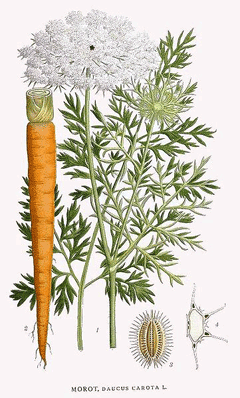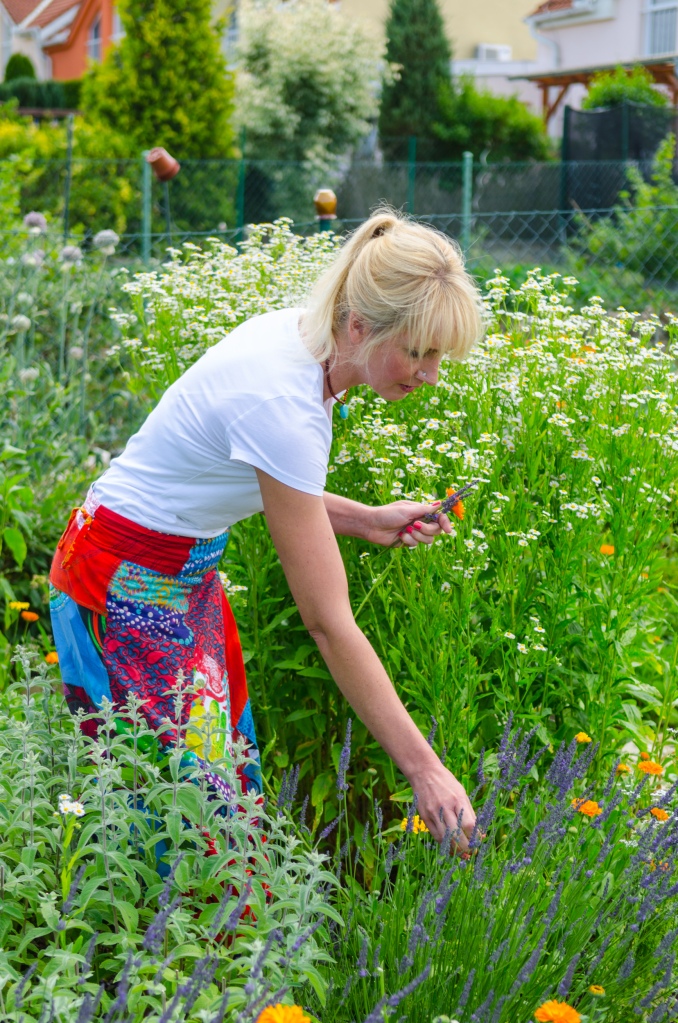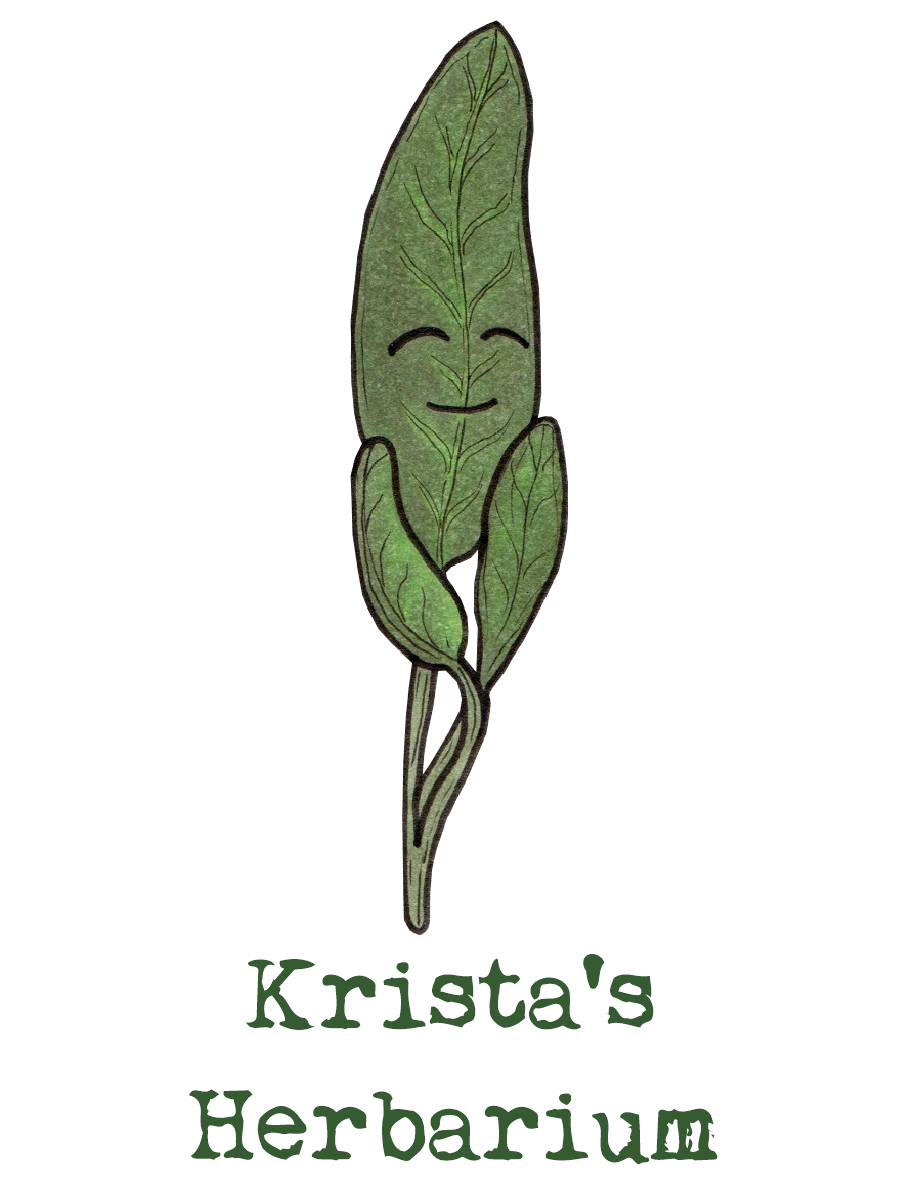Krista's Herbarium
a collection of herbal remedies, recipes, and reveries
Plant Families: Apiaceae
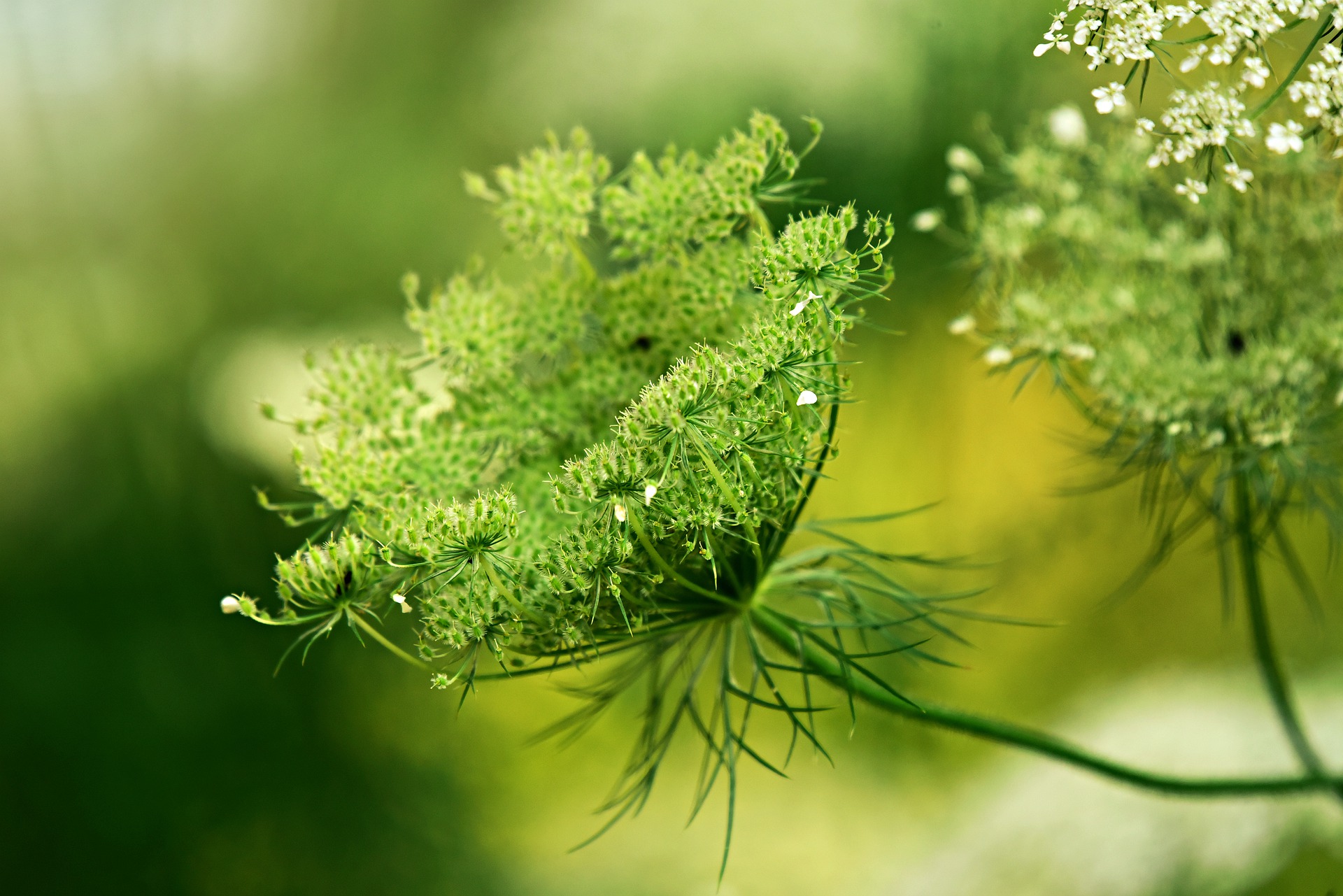
Apiaceae-Parsley/Carrot Family
Key Words: Compound umbels. Usually hollow flower stalks. Often aromatic.
Some of the most common plants, most loved and most eaten are in this beautiful Apiaceae family, as well as some of the world’s deadliest.
Mostly grown as vegetables or for food, whilst some are used as folk medicine, one must be sure of plant identification as many members of the Apiaceae family are poisonous. For this reason, it is important to get to know this plant family as one of the first families you study.
One can usually identify a member of the Apiaceae family by its distinctive umbel.
What’s an umbel?
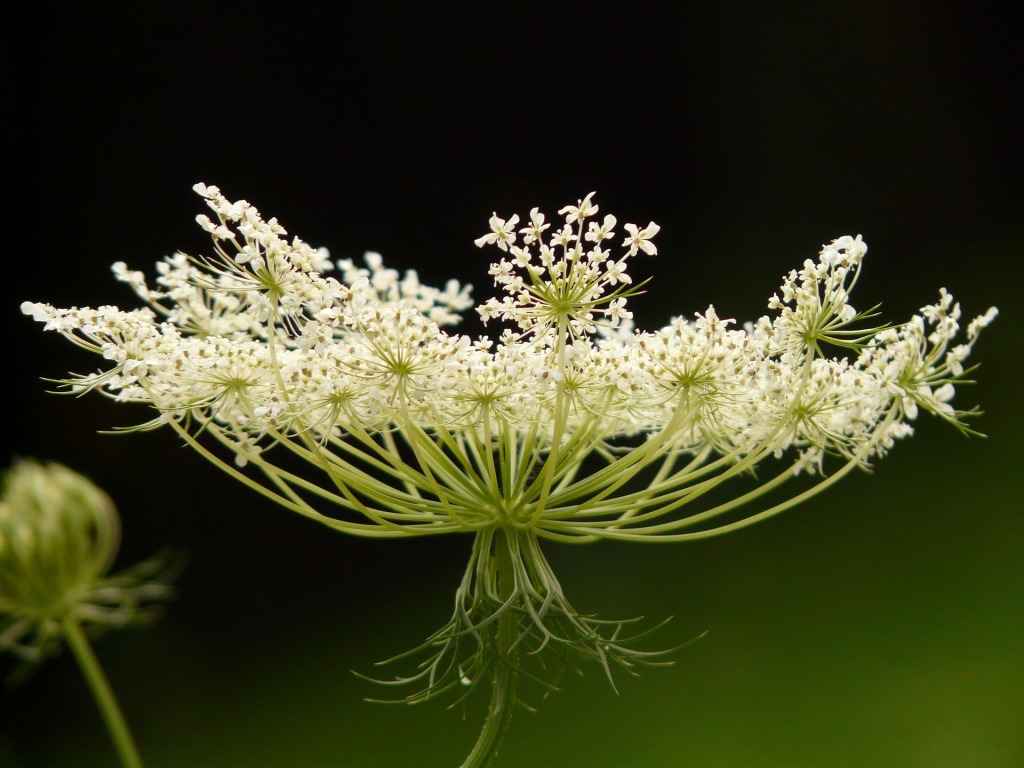

A word from Wikipedia about umbels:
In botany, an umbel is an inflorescence that consists of a number of short flower stalks (called pedicels) which spread from a common point, somewhat like umbrella ribs. The word was coined in botanical usage in the 1590s, from Latin umbella “parasol, sunshade”. The arrangement can vary from being flat-topped to almost spherical. Umbels can be simple or compound.
The secondary umbels of compound umbels are known as umbelules or umbellets. A small umbel is called an umbellule.
The arrangement of the inflorescence in umbels is referred to as umbellate, or occasionally subumbellate (almost umbellate).Umbels are a characteristic of plants such as carrot, parsley, dill, and fennel in the family Apiaceae; ivy, Aralia and Fatsia in the family Araliaceae; onion (Allium) in the family Alliaceae.
Wikipedia
Getting to know the Apiaceae family
Who hasn’t eaten a carrot? Or put celery in their soup base? Cut up some parsnip for a Sunday roast or used fennel or dill as a spice in a recipe? The Apiaceae family hosts some of our most common and well-loved ingredients. Cilantro for salsa, caraway seed in a curry or parsley in some sausage mix, this family has it all.
It’s a wonder we all are alive today. If foraging was necessary, many of us lack the skill to properly identify a Wild Carrot from its deadly cousin, Poison Hemlock. We must thank those that have gone before us, that have told the stories and drawn the illustrations, those that have paved the way in helping us to know the beauty and danger of this abundant plant family.

When you recognize the compound umbels of the Parsley family then you know you have to be careful. You must be 100% certain of what these plants are before you harvest them for food or medicine. More than that, you must be right! People die just about every year thinking they have discovered some kind of wild carrot.
wildflowersandweeds.com
This article by wildflowersandweeds.com is a great resource for the Apiaceae family.
Members of this family include:
- angelica (genus Angelica)
- anise (Pimpinella anisum)
- asafoetida (Ferula assa-foetida)
- caraway (Carum carvi)
- celery (Apium graveolens)
- celeriac (A. graveolens, variety rapaceum)
- cicely (Myrrhis odorata)
- chervil (Anthriscus cerefolium)
- coriander/cilantro (Coriandrum sativum)
- cowbane (genus Oxypolis)
- cow parsnip (genus Heracleum)
- hogweed (H. mantegazzianum and H. sphondylium)
- cumin (Cuminum cyminum)
- dill (Anethum graveolens)
- earthnut (Conopodium majus)
- fennel (Foeniculum vulgare)
- lovage (Levisticum officinale)
- parsley (Petroselinum crispum)
- parsnip (Pastinaca sativa)
- poison hemlock (Conium maculatum)
- smallage (Apium graveolens)
- Queen Anne’s lace (Daucus carota)
- carrot (Daucus carota, subspecies sativus)
- water hemlock (genus Cicuta)
- water parsnip (genus Sium)
Apiaceae Medicinal Actions
Members of this family can have these medicinal actions:
Anti-inflammatory, antihypertensive, antibacterial, diuretic, emmenagogue, stimulating, antimicrobial, antioxidant. These constituents can help with bronchitis, hepatitis, gastrointeritis.
Poisonous Plants: Poison Hemlock
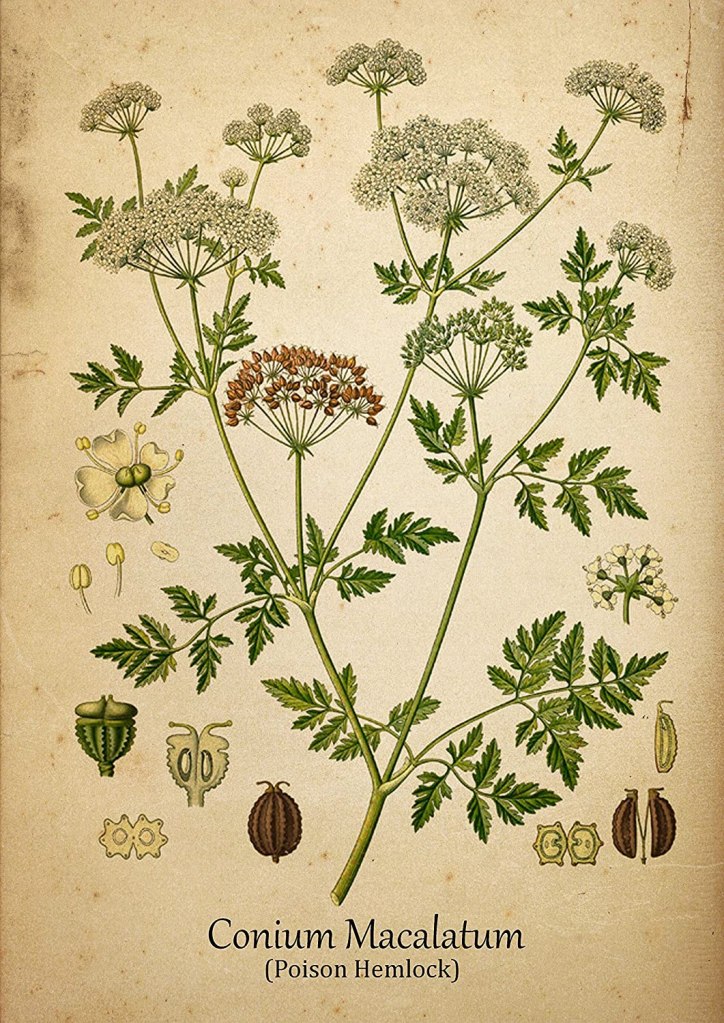
For him who fain would teach the world The world holds hate in fee— For Socrates, the hemlock cup; For Christ, Gethsemane.
-Don Marquis

About Poison Hemlock
Poison hemlock (Conium maculatum) is in the Apiaceae family, which also includes carrots, parsnips, parsley, fennel, and their wild counterparts.
It is an herbaceous biennial plant that can grow 5 to 10 feet (2-3 meters) tall or even taller.
It should not be confused with hemlock the coniferous tree which is completely harmless (and edible).
All parts of the plant are poisonous, including the flowers, leaves, stems, roots, and seeds.
Poison hemlock contains potent toxic alkaloids that affect the nervous system, and even small internal doses can cause respiratory collapse and death.
It can also cause a severe skin reaction similar to a burn when touched externally. Definitely not a plant to mess around with!
Historically poison hemlock was used in ancient Greece to poison condemned prisoners, and it was what killed Socrates after he drank a potent hemlock infusion.
growforagecookferment.com
How to properly identify poisonous members of the Apiaceae family
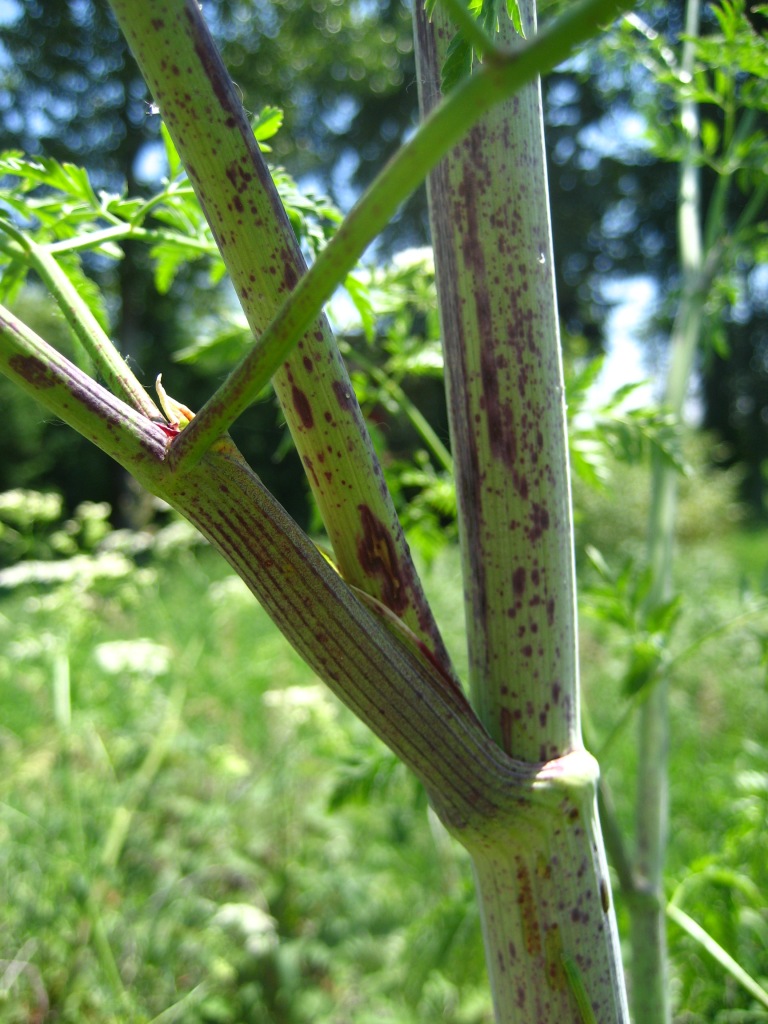
Eating even a small amount of any part of this plant can kill people, livestock, and wildlife!
Poison-hemlock stems have reddish or purple spots and streaks, are not hairy, and are hollow. Leaves are bright green, fern-like, finely divided, toothed on edges and have a strong musty odor when crushed. Flowers are tiny, white and arranged in small, umbrella-shaped clusters on ends of branched stems.
King County
Poison Hemlock Look-Alikes
Flowering poison-hemlock may be confused with wild carrot (Daucus carota, or Queen Anne’s Lace). In contrast with poison-hemlock, wild carrot has one densely packed umbrella-shaped flower cluster on a narrow, hairy stem, usually with one purple flower in the center of the flower cluster, and is usually 3 feet tall or less. Wild carrot also flowers later in the summer.
King County
If you are not sure, don’t touch the plant. Even touching the wrong Apiaceae can lead to photosensitivity rashes.
Look for red or purple spots to help you identify poison hemlock.
Apiaceae plant family resources:
- http://www.nativeplants.org/wp-content/uploads/apiaceae.pdf
- https://www.wildflowers-and-weeds.com/Plant_Families/Apiaceae.ht
Identifying a new plant
Using these resources, one is easily able to identify its genus and species:
